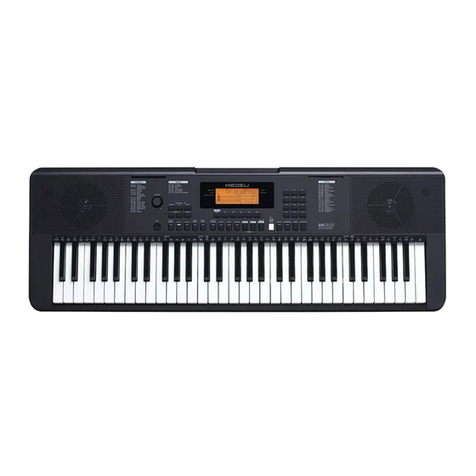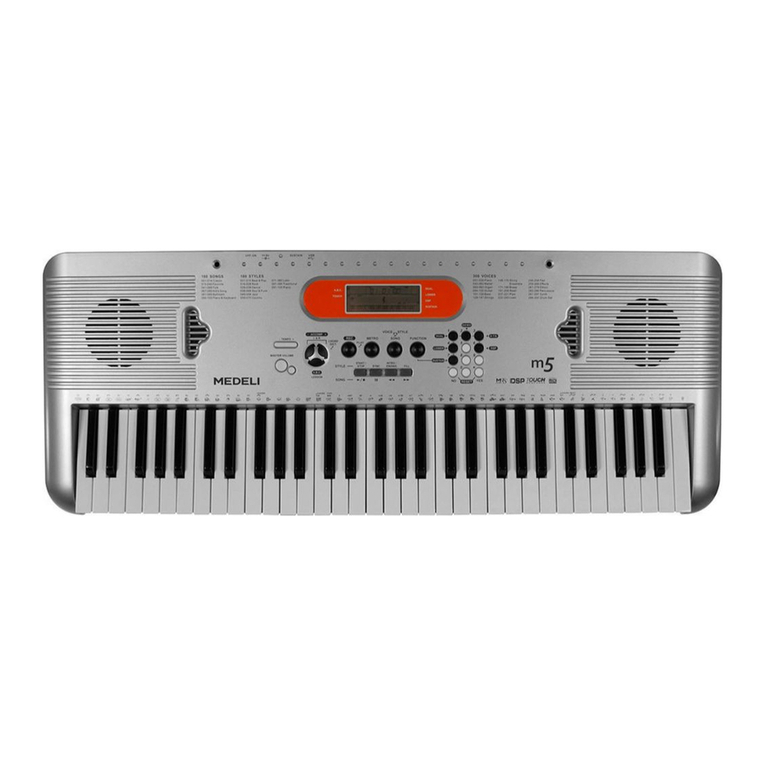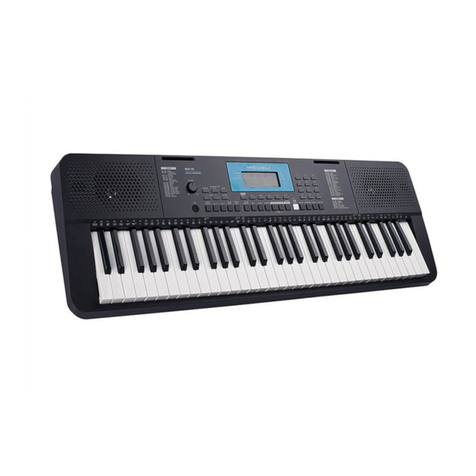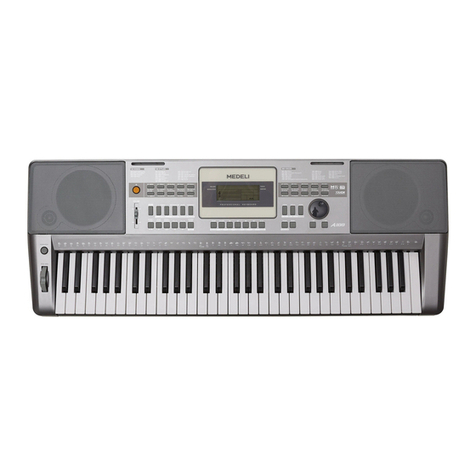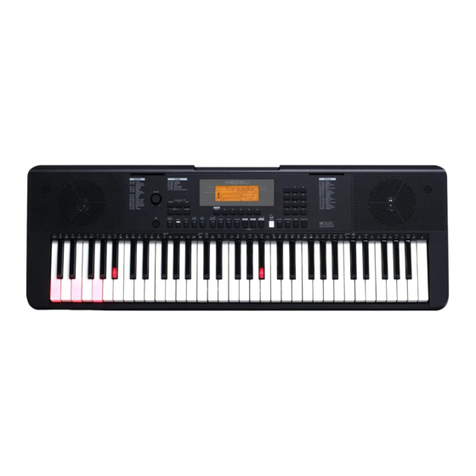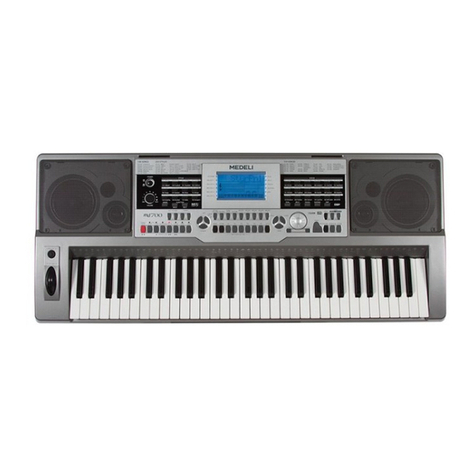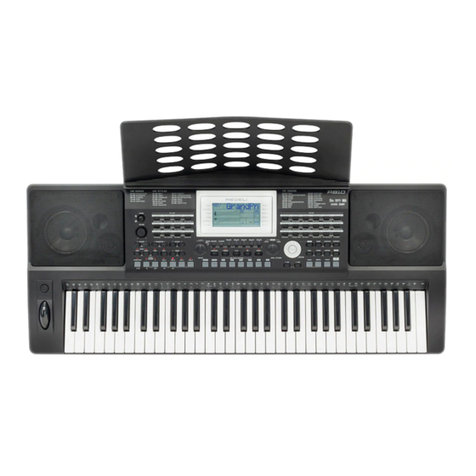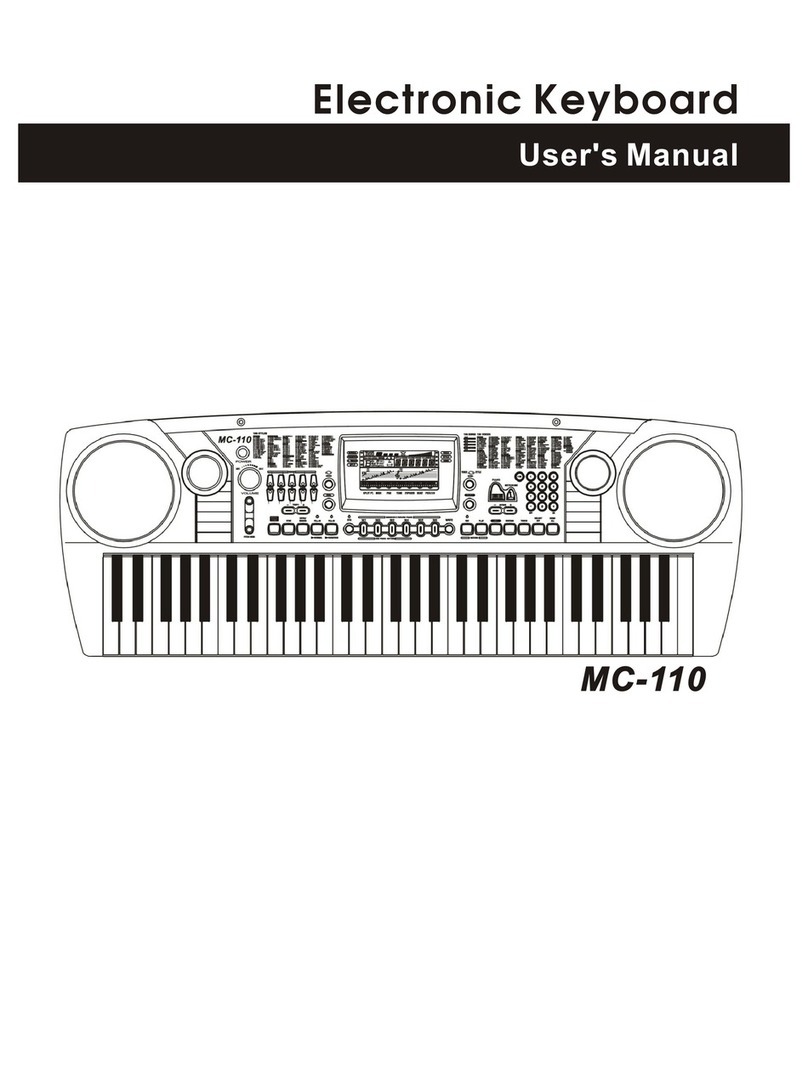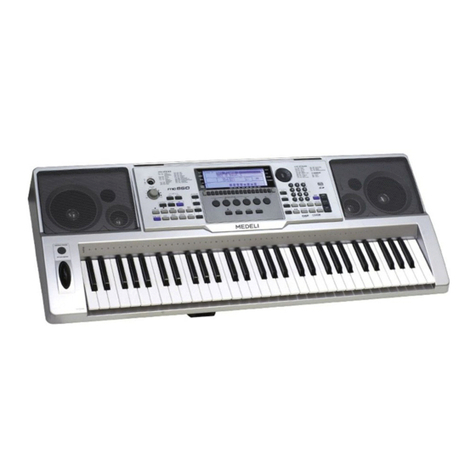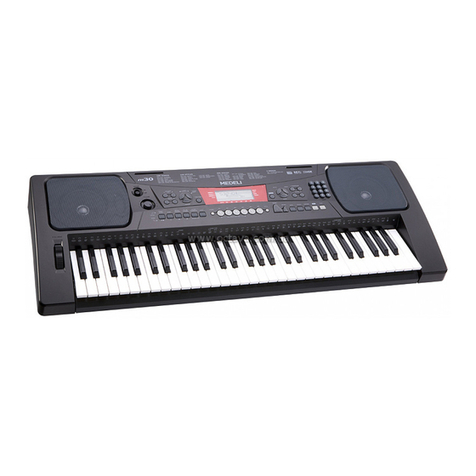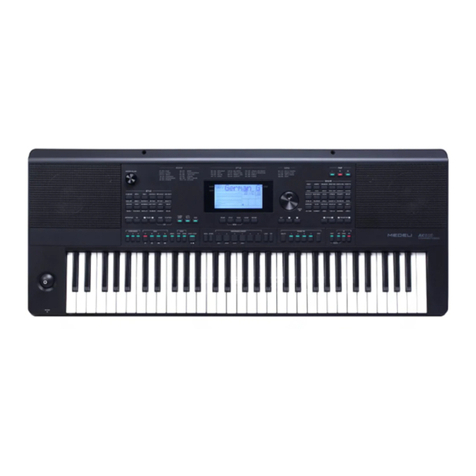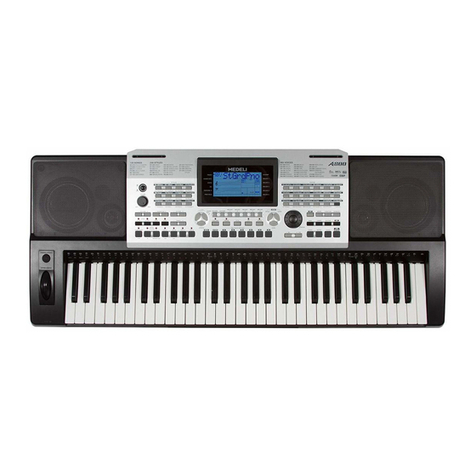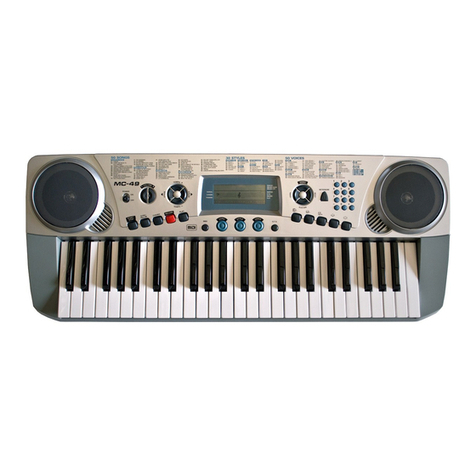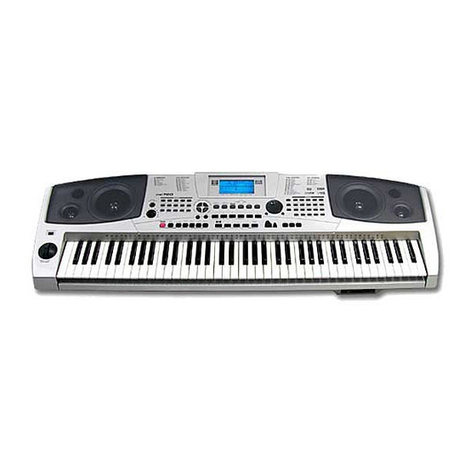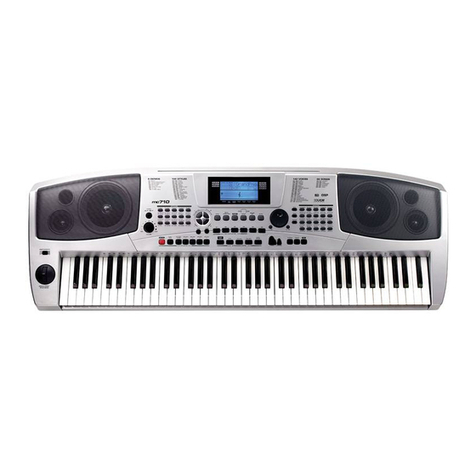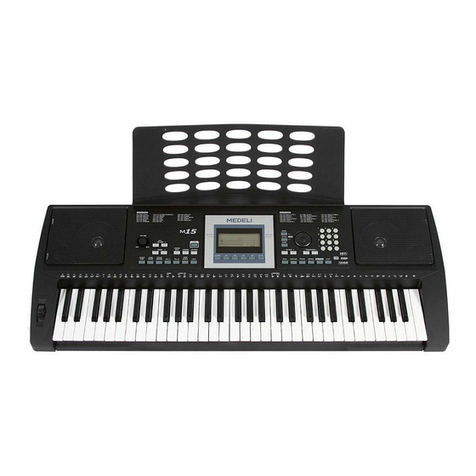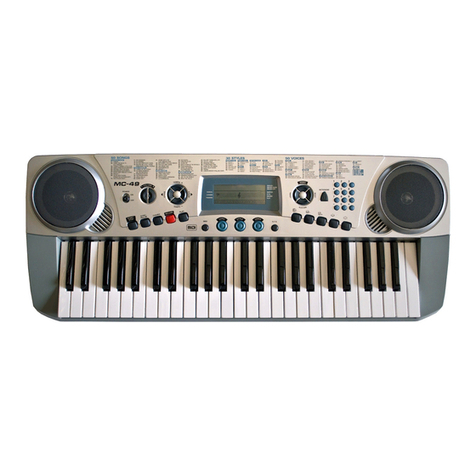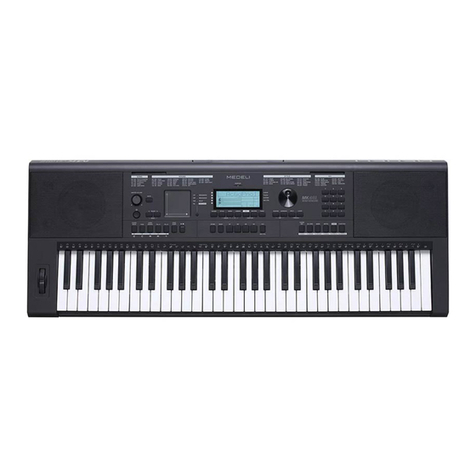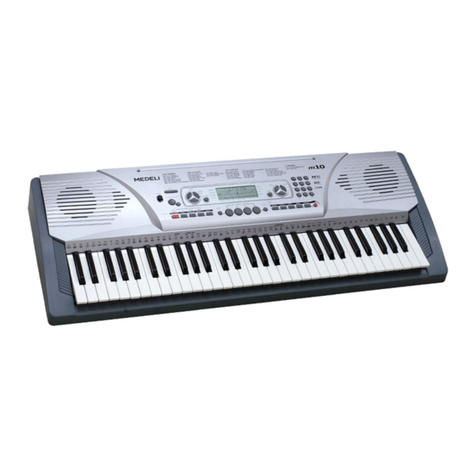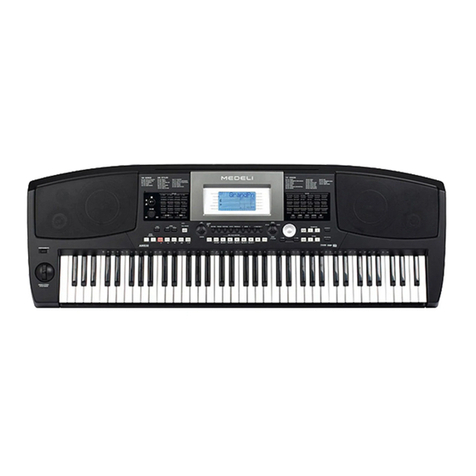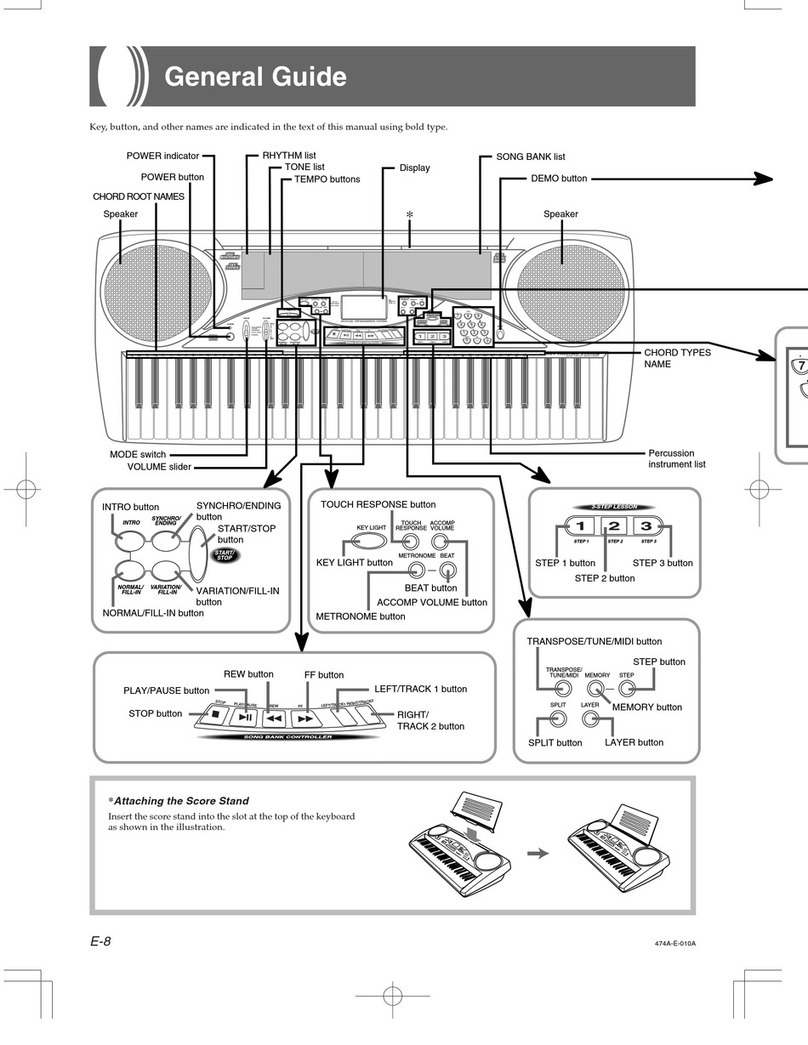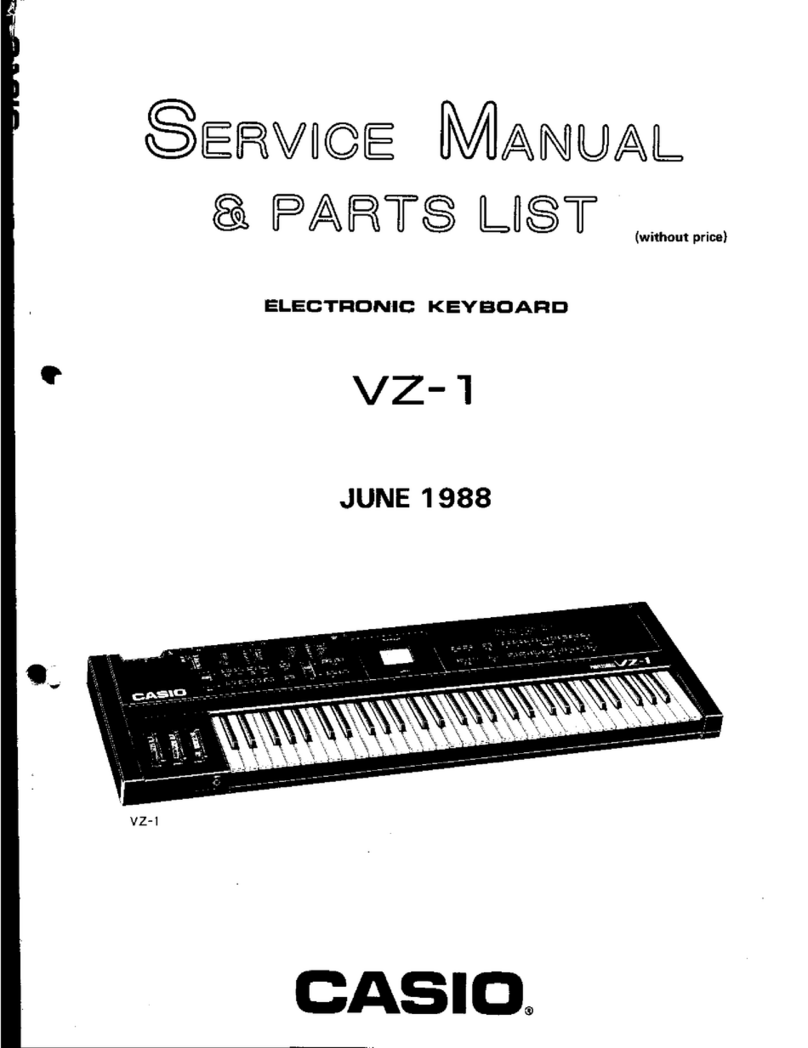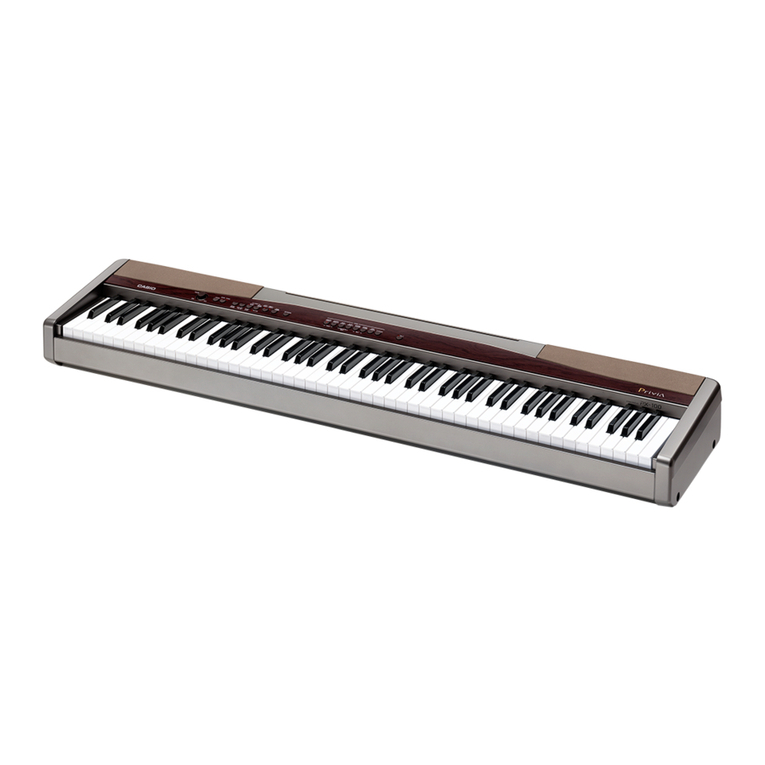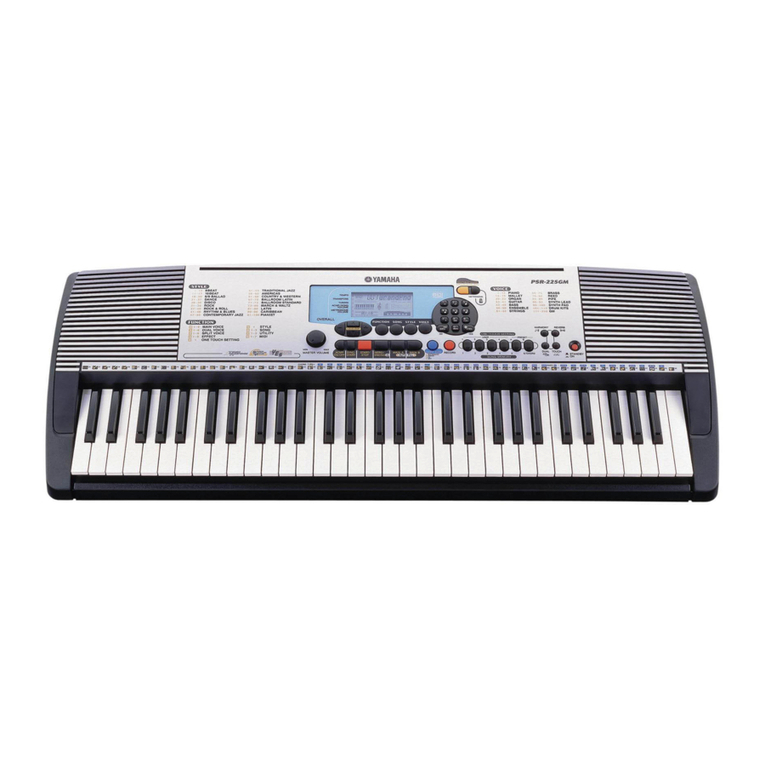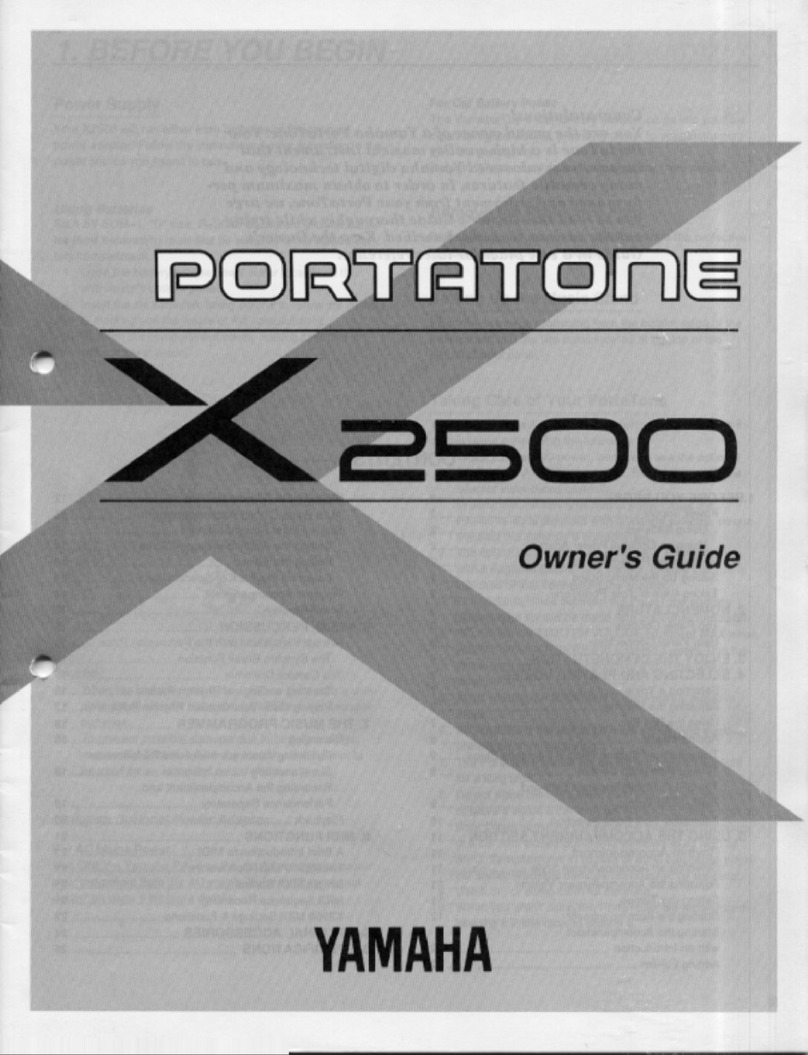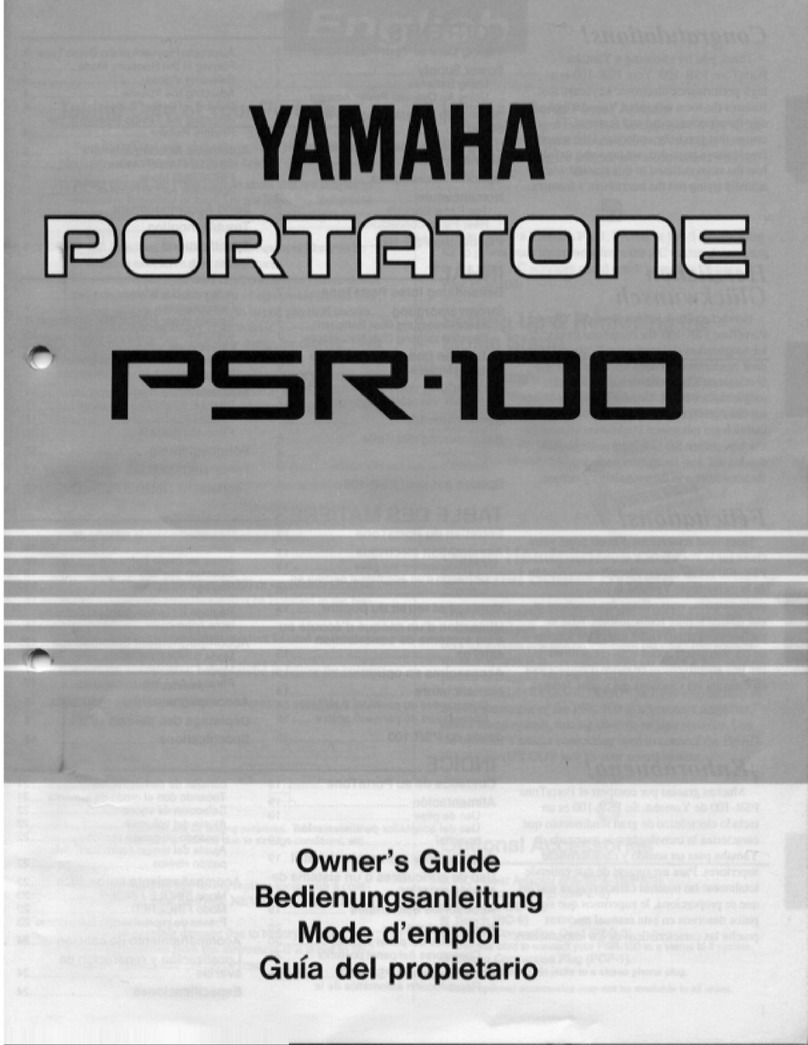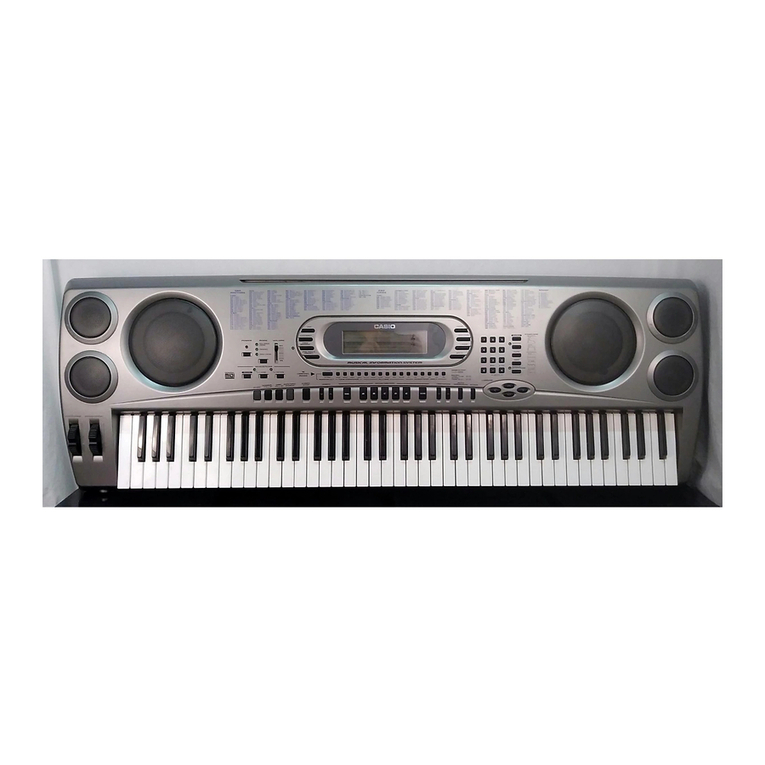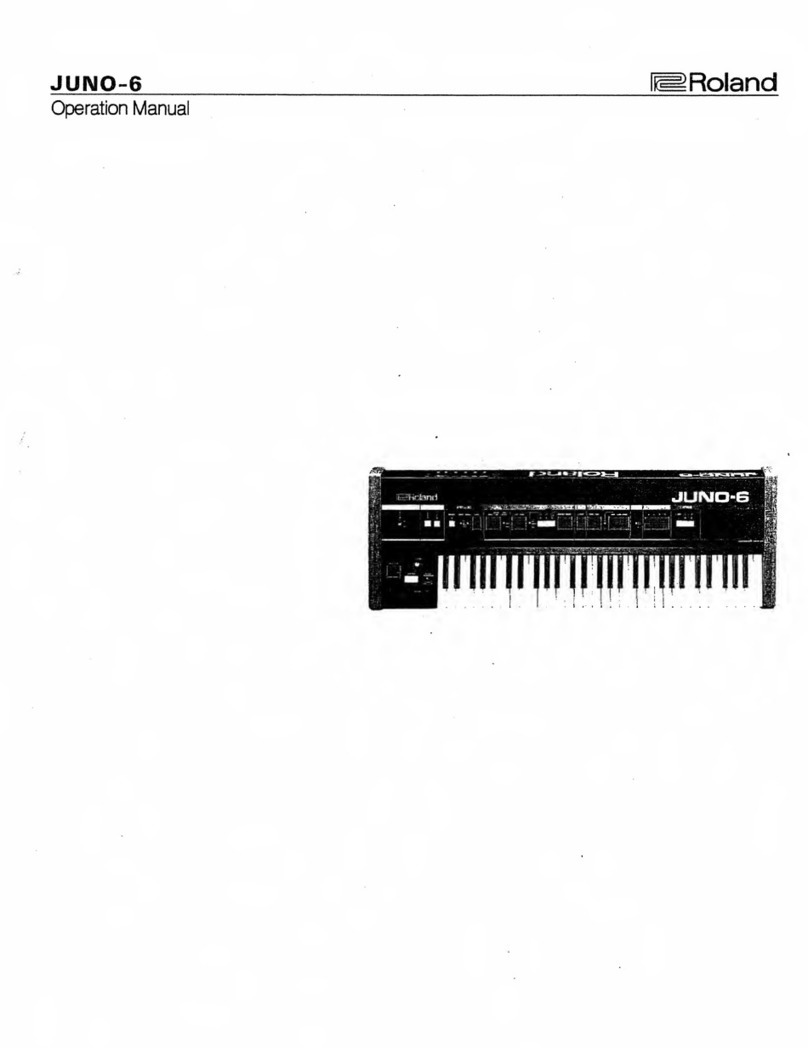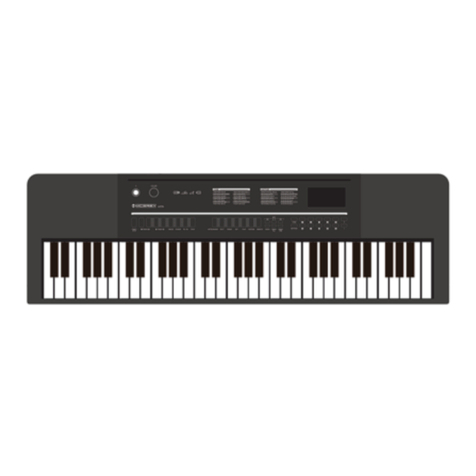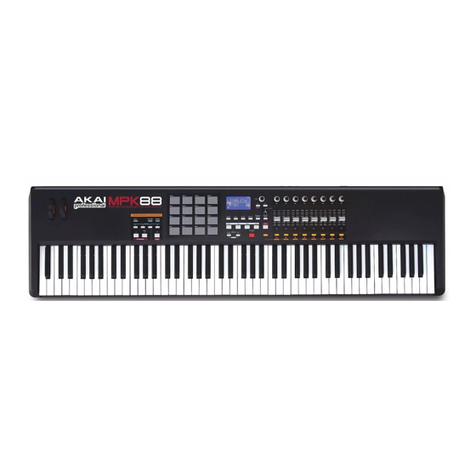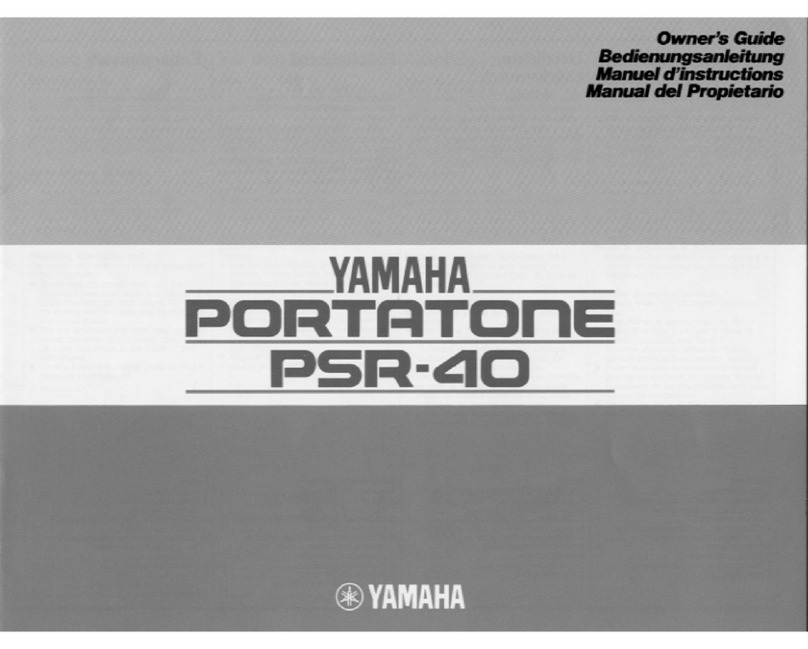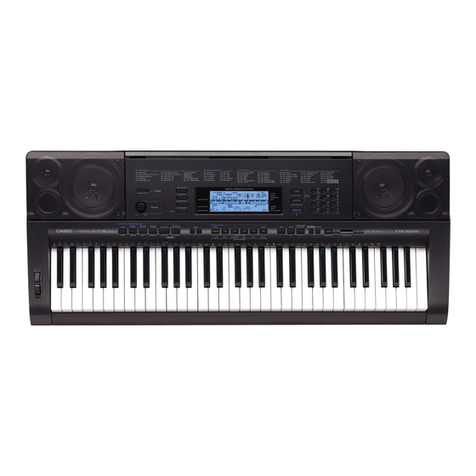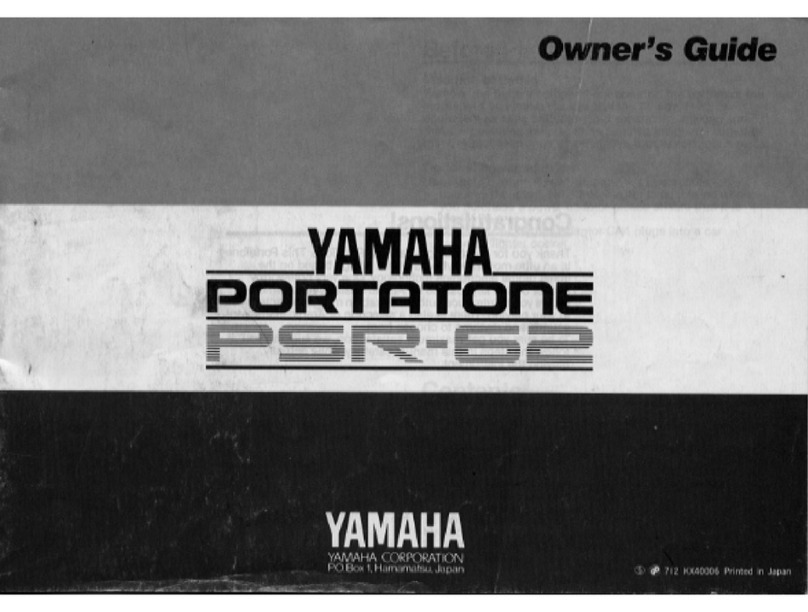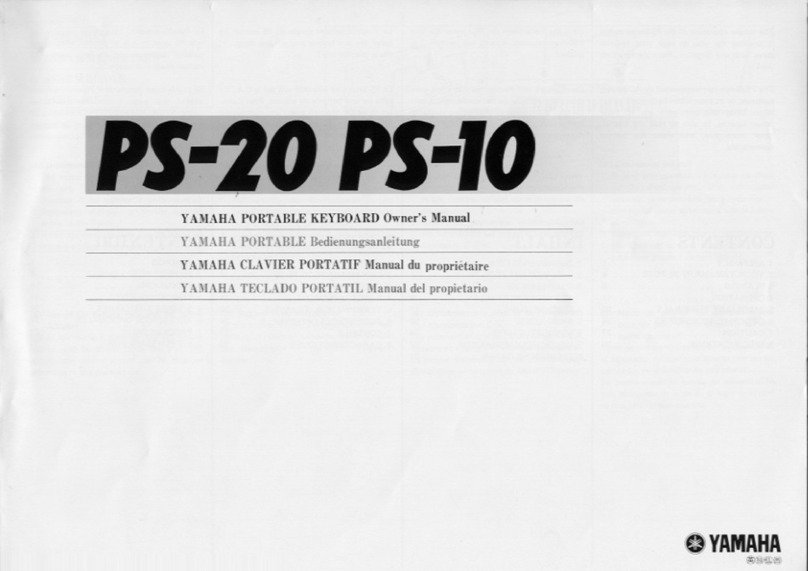
Store and Load...........................................................
Contents
General Guide..................................
Front Panel..........................................................
LCD Display.....................................................
Rear Panel................................................................
Top Panel...............................................................
Power Jack...................................................................
Setting Music Rest.............................................
Sustain Jack........................................................
Headphones Jack...............................................
Volume Jack....................................................
AUX OUT Jack................................................
USB Jack...............................................................
MIDI IN/OUT Jack...................................................
Connections...................................
Demo....................................................................
Preparation........................................
Power Switch & Volume....................................
Portamento......................................................
Piano.................................................................
DSP Effect..............................................................
Transpose..............................................................
Voices and Effects.........................
Select a Voice...................................................
Dual Voice...............................................................
Lower Voice/Split Point..........................................
Sustain.....................................................................
Pith bend/Moudulation joystick...........................
Octave.............................................................
Touch Respones..............................................
Fill A/B...............................................................
Recognizing Chords..............................................
Tempo........................................................................
Fade..........................................................................
Style Control.....................................
Select a Style........................................................
The Accompaniment Section..................................
Start a Style..............................................................
Stop a Style.......................................................
Accomp Volume........................................................
Metronome.................................................................
Split Point........................................................
Pedal Assign.....................................................
Portamento Time.....................................................
Beat.................................................................
Function Menu...............................
Tune.................................................................
Reverb Level...................................................
Chorus Level........................................................
MIDI Setting..................................................
Memory..................................................
Bank..............................................................................
Memory Data...........................................................................
One Touch Setting.............................................
Record..................................................
Delete Song.....................................................
Playback Song.........................................................
Record Song................................................
SD Function..................................................
Save........................................................................
Load........................................................................
Play..............................................................................
Delete........................................................................
Format........................................................................
Style Record...........................................
Quantify a Style...................................................
Copy a Style............................................................
Edit a Style...........................................................
Start Style Record.................................................
Record a new Style.................................................
Delete a Style....................................................
Lesson 1....................................................................
Lesson 3.................................................................
Lesson 2..................................................................
Song....................................................
Lesson Mode.......................................................
Chord Dictionary...............................
Pedal........................................................
MIDI Function......................................
USB Connection.....................................................
What is MIDI............................................................
MIDI Application..............................................
MIDI Connection.....................................................
Specifications...........................................
Trouble Shooting.........................................
Appendix 6-MIDI Implementation Chart.............................
Appendix 3-Song List.........................................................
Appendix 1-Voice List...........................................
Appendix 5-Chord List.......................................................
Appendix..............................................
Appendix 4-Demo List.....................................................
Appendix 2-Style List.................................................
5
Mixer Menu..................................................
6-7
6
7
7
7
9
8
8
8-10
9
8
9
10
10
11
11
11
12
12-15
13
13
14
12
14
15
14
15
14
15
16
16-22
16
17
18
18
19
20
20
20
21-22
23
23-25
23
24
24
24
24
25
25
27
27
27
27
28
28-30
30
28-29
30
41-46
43
42
45
45-46
44-45
31-36
31-32
32-33
34-35
35-36
36
34
37-39
37-38
38
38
39
39-40
41
47-48
47
47
48
48
49
49
50-59
50-54
57
55-56
58
58
59
26
DZBPFB0DQXDOB*BSGIDZBPFB0DQXDOB*BSGI
